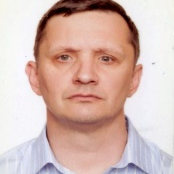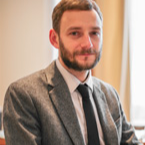International Journal of Modern Education and Computer Science (IJMECS)
IJMECS Vol. 13, No. 2, 8 Apr. 2021
Cover page and Table of Contents: PDF (size: 425KB)
Procedure for Processing Biometric Parameters Based on Wavelet Transformations
Full Text (PDF, 425KB), PP.11-22
Views: 0 Downloads: 0
Author(s)
Index Terms
Wavelet transform, biometric parameter, filtration, information security, face image, iris, operator, monitoring, authentication, emotion recognition.
Abstract
The problem of the article is related to the improvement of means of covert monitoring of the face and emotions of operators of information and control systems on the basis of biometric parameters that correlate with two-dimensional monochrome and color images. The difficulty in developing such tools has been shown to be largely due to the cleaning of images associated with biometric parameters from typical non-stationary interference caused by uneven lighting and foreign objects that interfere with video recording. The possibility of overcoming these difficulties by using wavelet transform technology, which is used to filter images by combining several identical, but differently noisy monochrome and color images, is substantiated. It is determined that the development of technology for the use of wavelet transforms is primarily associated with the choice of the type of basic wavelet, the parameters of which must be adapted to the conditions of use in a particular system of covert monitoring of personality and emotions. An approach to choosing the type of basic wavelet that is most effective in filtering images from non-stationary interference is proposed. The approach is based on a number of the proposed provisions and efficiency criteria that allow to ensure when choosing the type of basic wavelet taking into account the significant requirements of the task. A filtering procedure has been developed, which, due to the application of the specified video image filtering technology and the proposed approach to the choice of the basic wavelet type, allows to effectively clean the images associated with biometric parameters from typical non-stationary interference. The conducted experimental studies have shown the feasibility of using the developed procedure for filtering images of the face and iris of operators of information and control systems.
Cite This Paper
Zhengbing Hu, Ihor Tereikovskyi, Denys Chernyshev, Liudmyla Tereikovska, Oleh Tereikovskyi, Dong Wang, "Procedure for Processing Biometric Parameters Based on Wavelet Transformations ", International Journal of Modern Education and Computer Science(IJMECS), Vol.13, No.2, pp. 11-22, 2021. DOI:10.5815/ijmecs.2021.02.02
Reference
[1] Toliupa S., Tereikovskiy I., Dychka I., Tereikovska L., Trush A.. (2019) The Method of Using Production Rules in Neural Network Recognition of Emotions by Facial Geometry. 3rd International Conference on Advanced Information and Communications Technologies (AICT). 2019, 2-6 July 2019, Lviv, Ukraine, pp. 323 – 327. DOI: 10.1109/AIACT.2019.8847847.
[2] Akhmetov B., Tereykovsky I., Doszhanova A., Tereykovskaya L. (2018) Determination of input parameters of the neural network model, intended for phoneme recognition of a voice signal in the systems of distance learning. International Journal of Electronics and Telecommunications. Vol. 64, No 4 (2018), pp. 425-432. DOI: 10.24425/123541.
[3] Hu, Z., Tereykovskiy, I., Zorin, Y., Tereykovska, L., Zhibek, A. Optimization of convolutional neural network structure for biometric authentication by face geometry. Advances in Intelligent Systems and Computing. 2018. Vol. 754, pp. 567-577.
[4] Tereikovskyi I. A., Chernyshev D. O., Tereikovska L.A., Mussiraliyeva Sh. Zh., Akhmed G. Zh. The Procedure For The Determination Of Structural Parameters Of A Convolutional Neural Network To Fingerprint Recognition. Journal of Theoretical and Applied Information Technology. 30th April 2019. Vol.97. No 8. pp. 2381-2392.
[5] Seyed M., Marjan A., Face emotion recognition system based on fuzzy logic using algorithm improved Particle Swarm, International Journal of Computer Science and Network Security, Vol.16 No.7, July 2016, pp 157-166.
[6] Goodfellow, J., Erhan, D., Carrier, L. (2015), Challenges in representation learning: A report on three machine learning contests, Neural Networks. 2015, vol. 64, pp. 59–63.
[7] Tariq U., Lin K., Li Z., Zhou Z., Wang Z., Le V., Huang T.S., Lv X., Han T.X. Emotion Recognition from an Ensemble of Features. Systems, Man, and Cybernetics, Part B: Cybernetics, IEEE Transactions, 2012, Vol. 42 (4), pp. 1017–1026.
[8] Tereikovskyi I., Subach I., Tereikovskyi O., Tereikovska L., Toliupa S., Nakonechnyi V. Parameter Definition for Multilayer Perceptron Intended for Speaker Identification, Proceedings of the 2019 IEEE International Conference on Advanced Trends in Information Theory (ATIT), Kyiv, Ukraine, 2019, pp. 227-231.
[9] Chandrani S., Washef A., Soma M., Debasis M. Facial Expressions: A Cross-Cultural Study. Emotion Recognition: A Pattern Analysis Approach. Wiley Publ., 2015, pp. 69–86.
[10] Erik Learned-Miller, Gary B. Huang, Aruni RoyChowdhury, Haoxiang Li, Gang Hua. Labeled Faces in the Wild: A Survey. In: Advances in Face Detection and Facial Image Analysis, Springer, pages 189-248, 2016.
[11] Ghosh S., Laksana E., Scherer S., Morency L.-P. A multi-label convolutional neural network approach to crossdomain action unit detection. In: Affective Computing and Intelligent Interaction, International Conference on, pp. 609–615. IEEE, 2015.
[12] Anderson K., McOwan W. A realtime automated system for the recognition of human facial expressions. Systems, Man, and Cybernetics, Part B: Cybernetics, IEEE Transactions, Vol.36, no.1, pp.96-105, 2006.
[13] A. Teuner, O. Pichler and B. J. Hosticka, Unsupervised texture segmentation of images using tuned matched Gabor filters, In: IEEE Transactions on Image Processing, Vol. 4, no. 6, pp. 863-870.
[14] T. R. Reed. Segmentation of textured images and gestalt organization using spatial/spatial-frequency representations, IEEE Trans. Pattern Anal. Machine Intell., Vol. 12, no. 1, pp. 1-12.
[15] M. Porat and Y. Y. Zeevi, Localized texture processing in vision: Analysis and synthesis in the Gaborian space, IEEE Trans. Biomed Eng., Vol. 36, no. 1, pp. 115-129.
[16] D. J. Field, Relations between the statistical of natural images and the response properties of cortical cells, J. Opt. Soc. Amer. A, Vol. 4, no. 12, pp. 2379-2394, 1987.
[17] L. Fang, O. C. Au, K. Tang and A. K. Katsaggelos, Antialiasing Filter Design for Subpixel Downsampling via Frequency-Domain Analysis, In: IEEE Transactions on Image Processing, Vol. 21, no. 3, pp. 1391-1405, March 2012, doi: 10.1109/TIP.2011.2165550.
[18] Yudin O., Toliupa S., Korchenko O., Tereikovska L., Tereikovskyi I., Tereikovskyi O. Determination of Signs of Information and Psychological Influence in the Tone of Sound Sequences, Proceedings of the 2020 IEEE 2nd International Conference on Advanced Trends in Information Theory (ATIT), Kyiv, Ukraine, 2020, pp. 276-280. DOI: 10.1109/ATIT50783.2020.9349302.
[19] Shuping Yao, Changzhen Hu, Wu Peng, Server Load Prediction Based on Wavelet Packet and Support Vector Regression. International Conference on Computational Intelligence and Security. 2006, Vol. 2, pp. 1016-1019.
[20] Hu, Z., Tereikovskyi, I., Tereikovska, L., Tsiutsiura, M., Radchenko, K. Applying Wavelet Transforms for Web Server Load Forecasting. Advances in Intelligent Systems and Computing. 2020. Vol. 938, pp. 13-22. DOI: 10.1007/978-3-030-16621-2_2.
[21] Priti S. Sanjekar, J. B. Patil, " Wavelet based Multimodal Biometrics with Score Level Fusion Using Mathematical Normalization", International Journal of Image, Graphics and Signal Processing, Vol.11, No.4, pp. 63-71, 2019.
[22] Tisse C., Martin L., Torres L., Robert M. Person identification technique using human iris recognition. Acoustics, Speech, and Signal Processing. Proceedings ICASSP ’05. 2005. Vol. 2. pp. 949–952.
[23] Tisse C. Person Identification Technique using Human Iris Recognition. Proc. Of Vision Interface. 2002. Pp. 294–299.
[24] Steinbuch, M. Wavelet Theory and Applications a literature study. Eindhoven University of Technology, 2005. 39 p.
[25] M. Antonini, M. Barlaud, P. Mathieu and I. Daubechies. Image coding using wavelet transform, In: IEEE Transactions on Image Processing, Vol. 1, no. 2, pp. 205-220, April 1992, doi: 10.1109/83.136597.
[26] D. Vijendra Babu, Dr. N.R. Alamelu. Wavelet Based Medical Image Compression Using ROI EZW. Int. J. of Recent Trends in Engineering and Technology. 2009. Vol. 1, No. 3. pp. 42-56.
[27] Eman I. Abd El-Latif, Ahmed Taha, Hala H. Zayed,"A Passive Approach for Detecting Image Splicing using Deep Learning and Haar Wavelet Transform", International Journal of Computer Network and Information Security, Vol.11, No.5, pp.28-35, 2019.
[28] Hossam Eddine Guia, Ammar Soukkou, Redha Meneceur, Abdelkrim Mohrem, " Design and Implementation of Real Time RMS Measurement System based on Wavelet Transform Using adsPIC-type Microcontroller", International Journal of Image, Graphics and Signal Processing, Vol.12, No.6, pp. 43-56, 2020.





